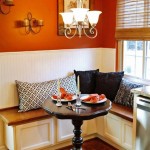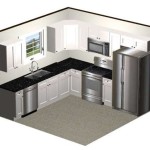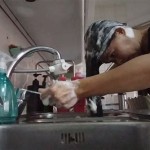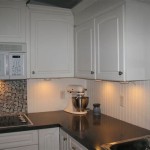Glass Tile Backsplash For Kitchen: A Comprehensive Guide
A kitchen backsplash serves a dual purpose: protecting the wall from splashes and spills while simultaneously contributing to the overall aesthetic appeal of the kitchen. Among the myriad of materials available, glass tile stands out as a popular choice due to its versatility, durability, and visual impact. This article provides an in-depth exploration of glass tile backsplashes for kitchens, covering their types, advantages, installation, maintenance, and design considerations.
Types of Glass Tile
Glass tile is not a monolithic category; it encompasses a range of types, each with distinct characteristics that influence its appearance and performance. Understanding these differences is crucial for selecting the appropriate tile for a specific kitchen design.
Clear Glass Tile: As the name implies, clear glass tile is transparent, allowing the color behind it to show through. This type offers a unique opportunity to customize the backsplash color by painting the wall beforehand. Clear glass tiles are often used in mosaic patterns or to create a sense of depth in smaller kitchens.
Frosted Glass Tile: Frosted glass tile has a textured surface that diffuses light, resulting in a softer, more muted appearance. This type is excellent for concealing smudges and fingerprints, making it a practical choice for high-traffic kitchens. The frosted finish also adds a subtle visual interest without being overly reflective.
Recycled Glass Tile: Environmentally conscious homeowners often gravitate towards recycled glass tile. This type is manufactured from post-consumer or post-industrial glass waste, reducing landfill burden and conserving resources. Recycled glass tile often exhibits unique variations in color and texture, adding character to the backsplash.
Painted Glass Tile: Painted glass tile features a layer of paint applied to the back of the tile. This paint is protected from direct exposure to moisture and grease, ensuring its longevity. Painted glass tile offers a wide range of color options and is less prone to scratching compared to tiles with surface glazes.
Iridescent Glass Tile: Iridescent glass tile possesses a shimmering, multi-colored effect that changes with the viewing angle and lighting conditions. This type adds a touch of glamour and sophistication to the kitchen. However, iridescent tiles can be more expensive and may require more careful installation to ensure a uniform appearance.
Glass Mosaic Tile: Glass mosaic tiles are small pieces of glass arranged on a mesh backing, forming intricate patterns and designs. These tiles are incredibly versatile, allowing for complex color combinations and custom layouts. Mosaic tiles can be used to create focal points or to add texture and visual interest to a larger backsplash area.
Advantages of Glass Tile Backsplashes
Glass tile backsplashes offer numerous advantages over other materials, making them a desirable choice for kitchen renovations and new construction projects. These advantages span aesthetic, functional, and practical considerations.
Aesthetic Appeal: Glass tile is renowned for its aesthetic versatility. Its reflective surface enhances light, making kitchens appear brighter and more spacious. The availability of various colors, sizes, shapes, and finishes allows homeowners to create backsplashes that complement their overall kitchen design. From sleek and modern to rustic and traditional, glass tile can adapt to diverse styles.
Durability: Glass tile is a durable material that can withstand the rigors of a kitchen environment. It is resistant to stains, scratches, and heat, making it ideal for areas prone to spills and splatters. Properly installed glass tile can last for many years with minimal maintenance.
Ease of Cleaning: One of the most significant advantages of glass tile is its ease of cleaning. The non-porous surface prevents liquids and stains from penetrating, allowing for easy wipe-down with a damp cloth or mild cleaner. This ease of maintenance saves time and effort, keeping the backsplash looking pristine.
Moisture Resistance: Glass is inherently resistant to moisture, making it an excellent choice for areas exposed to water, such as behind the sink and cooktop. Unlike some other materials, glass tile will not absorb water, preventing the growth of mold and mildew. This is particularly important in kitchens, where humidity levels can be high.
Design Flexibility: Glass tile offers unparalleled design flexibility. It can be cut into various shapes and sizes, allowing for custom patterns and layouts. The tile can be combined with other materials, such as ceramic or stone, to create unique and visually appealing designs. The translucent nature of glass also allows for the incorporation of backlighting, further enhancing its aesthetic impact.
Light Reflection: Glass tiles, especially those with a glossy finish, excel at reflecting light. This inherent property can be strategically employed to brighten up darker kitchens or to accentuate specific areas. The increased luminosity contributes to a more cheerful and inviting atmosphere, enhancing the overall kitchen experience.
Installation and Maintenance of Glass Tile Backsplashes
Proper installation and maintenance are essential for ensuring the longevity and aesthetic appeal of a glass tile backsplash. While DIY installation is possible, professional installation is generally recommended, particularly for complex designs or larger areas.
Installation Process: The installation process typically involves preparing the surface, applying thin-set mortar, setting the tiles, grouting, and sealing. It is crucial to use the correct type of thin-set mortar, specifically formulated for glass tile, to ensure proper adhesion and prevent discoloration. The surface must be clean, level, and free of any loose debris. Proper spacing between tiles is essential for achieving a uniform appearance and allowing for grout application. Grouting fills the gaps between the tiles, providing a water-resistant barrier and enhancing the overall aesthetic. Sealing the grout helps to protect it from stains and moisture, prolonging its lifespan.
Surface Preparation: Before beginning the installation, the wall surface must be adequately prepared. This involves cleaning the surface to remove any dirt, grease, or loose paint. Any holes or imperfections should be filled with patching compound and sanded smooth. If the wall is uneven, it may be necessary to apply a leveling compound to create a smooth, even surface. Priming the wall can also improve adhesion and prevent moisture from seeping into the wall behind the tiles.
Thin-Set Mortar Application: Choosing the right thin-set mortar is crucial for successful glass tile installation. A white or light-colored thin-set is recommended to prevent the mortar color from affecting the appearance of the glass. The thin-set should be applied evenly using a notched trowel, ensuring that the notches are the correct size for the tile being used. It is important to only apply thin-set to an area that can be covered with tiles within a reasonable timeframe to prevent the mortar from drying out.
Tile Setting: When setting the tiles, apply gentle pressure to ensure they are firmly embedded in the thin-set. Use tile spacers to maintain consistent spacing between the tiles. Regularly check the alignment and levelness of the tiles using a level or straight edge. Any excess thin-set that squeezes up between the tiles should be removed immediately with a damp sponge.
Grouting: After the thin-set has cured, the grout can be applied. Choose a grout color that complements the tile and the overall kitchen design. Apply the grout using a grout float, pressing it firmly into the gaps between the tiles. Remove excess grout with a damp sponge, being careful not to remove too much grout from the joints. After the grout has partially dried, polish the tiles with a clean, dry cloth to remove any remaining grout haze.
Sealing: Sealing the grout helps to protect it from stains and moisture and makes it easier to clean. Apply a grout sealer according to the manufacturer's instructions. Allow the sealer to dry completely before using the backsplash. Reapply the sealer periodically to maintain its effectiveness.
Maintenance: Regular cleaning is essential for maintaining the appearance of a glass tile backsplash. Wipe the tiles with a damp cloth or sponge after each use to remove any spills or splatters. For more stubborn stains, use a mild cleaner or glass cleaner. Avoid using abrasive cleaners or scouring pads, as these can scratch the surface of the tiles. Periodically inspect the grout for cracks or damage and repair as needed to prevent water damage.
Preventative Measures: Preventative measures can significantly extend the lifespan and maintain the pristine appearance of a glass tile backsplash. Promptly wipe away any spills or spatters to prevent staining. Use a range hood when cooking to minimize grease buildup. Address any leaks or water damage immediately to prevent mold and mildew growth. Regular cleaning and maintenance will ensure that the backsplash remains a beautiful and functional feature of the kitchen for years to come.

5 Beautiful Glass Tile Backsplash Ideas Arizona

Timeless Glass Tile Backsplashes That Never Go Out Of Style
Glass Mosaic Tile Backsplash Ideas

23 Best Glass Backsplash Kitchen Ideas Tiles

Manufactured Home Kitchen Backsplash Styles Clayton Studio

75 Stunning Kitchen Backsplash Ideas For Every Style And Budget

Glass Tile Backsplashes By Subwaytileoutlet Modern Kitchen Other Subway Outlet Houzz Au
Is Glass Mosaic Tiles Good For A Kitchen Backsplash Orientbell

Glass Tile Backsplash Ideas For Every Kitchen Style Lakewood Ranch Fl Lg Kramer Flooring

Bodesi Deep Ocean Glass Tile For Kitchen Backsplash And Showers 3 In X 6 Sample 0 125 Sq Ft Piece Hpt Do S The Home








